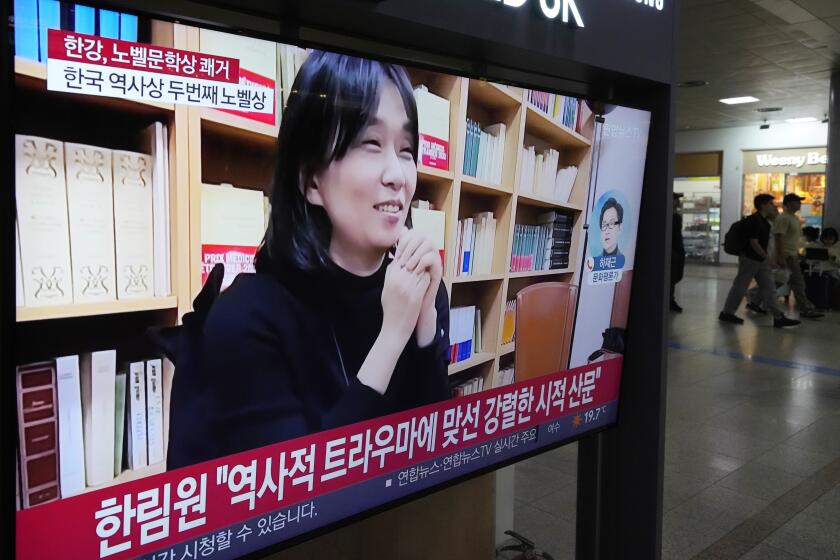Op-Ed: Skyglow: The night sky you can’t see
- Share via
When was the last time you looked up at the night sky and glimpsed the Milky Way? Last night? A year ago? Never? Some 80% of North Americans can no longer see the galaxy due to light pollution, or skyglow.
Light pollution causes a profound ecological disruption that affects human health, alters animal migratory patterns and obstructs astronomical research. Recent findings even suggest higher
To bring attention to the problem, we traveled across the continent using long exposure DSLR photography to capture the cosmos from North America’s endangered “dark sky” locations. Despite its immense population, we still found some of the best shots in our own backyard of Southern California. Each photo was exposed for 25 seconds, allowing galactic details to flood in — far more than can be seen with the naked eye. The psychedelic “star trails” effect in many of the pictures was created by tracking the rotation of the Earth’s axis over several hours as our cameras fired continuously, operated by remote controls known as intervalometers.
Night isn’t just a darker version of day, it’s our chance to see the universe — or it was once, and could be again if we understood light pollution as the environmental tragedy it really is.
Superbloom — Death Valley National Park
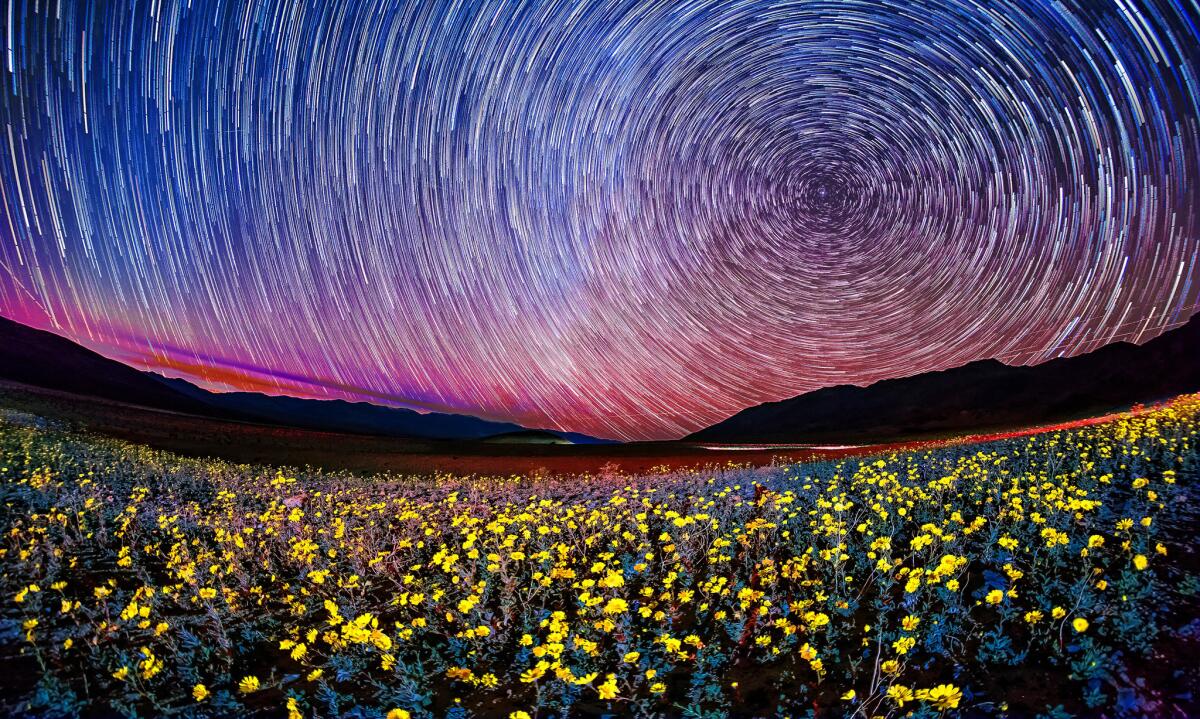
U.S. Route 40 — Mojave National Preserve
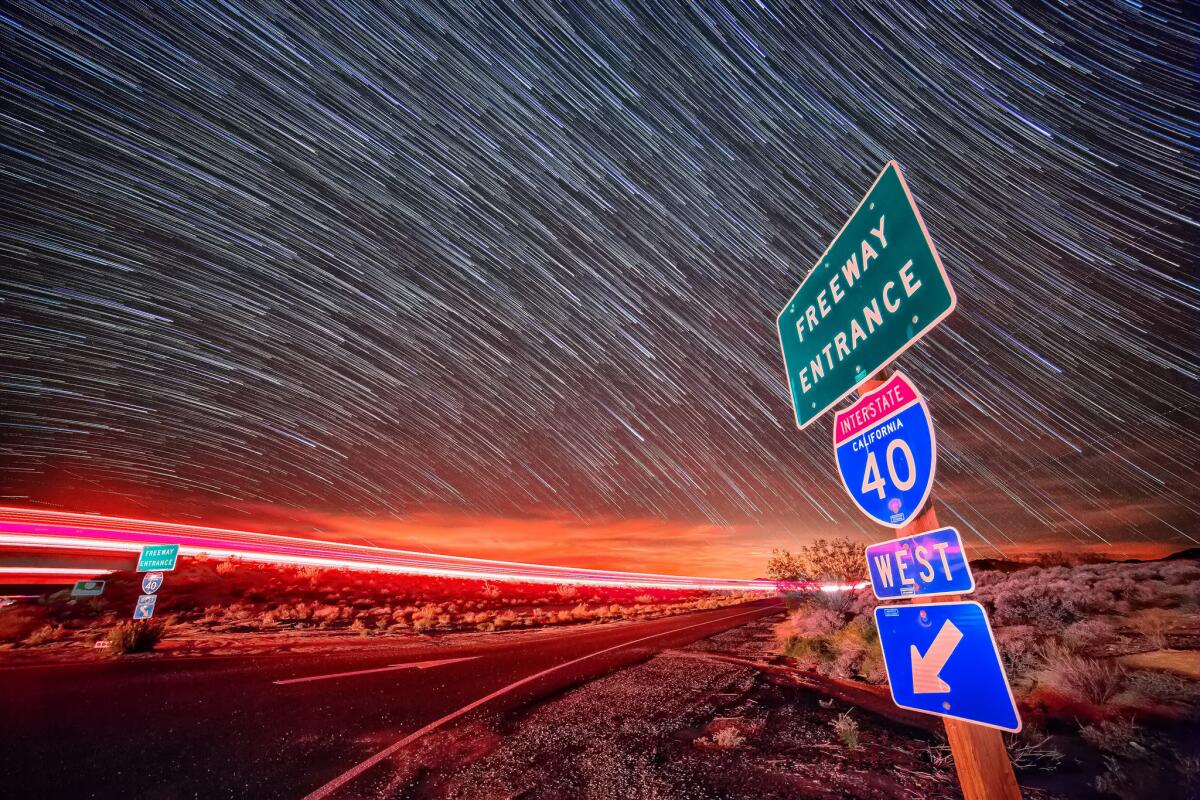
Ghost town constellations — Cerro Gordo
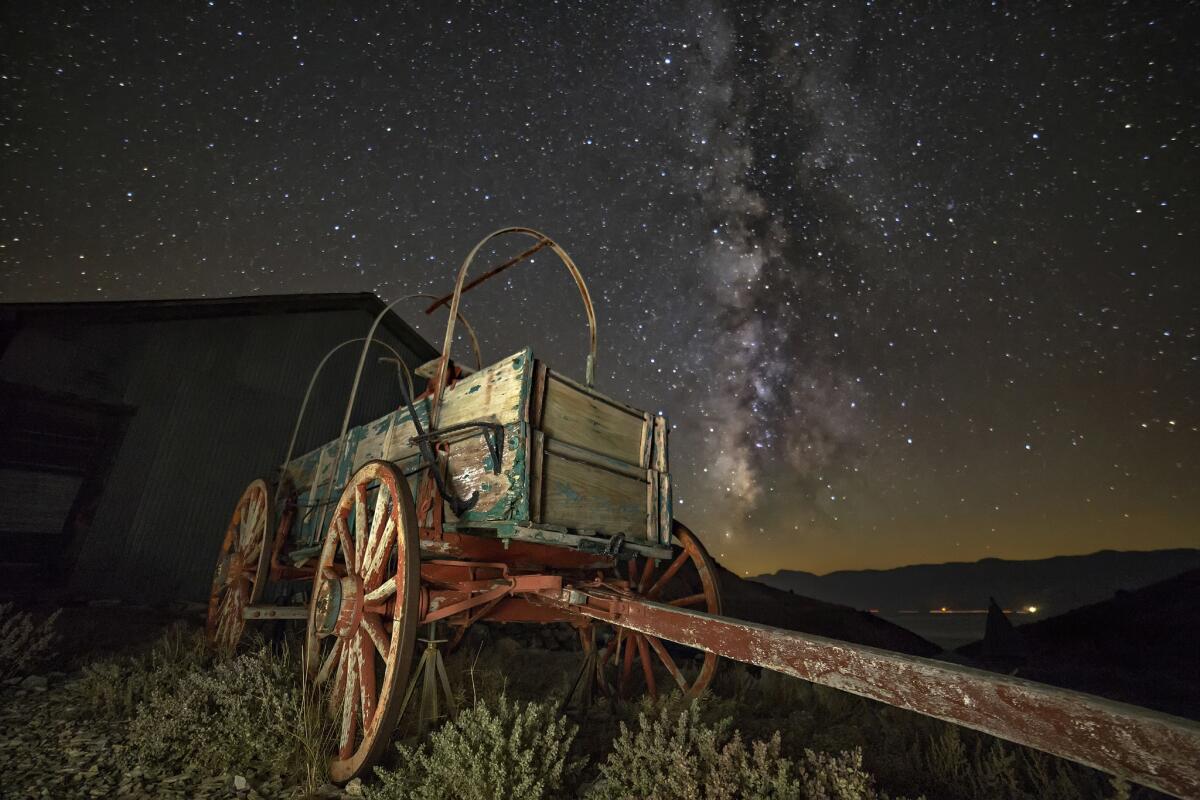
The Perseids — Mojave National Preserve
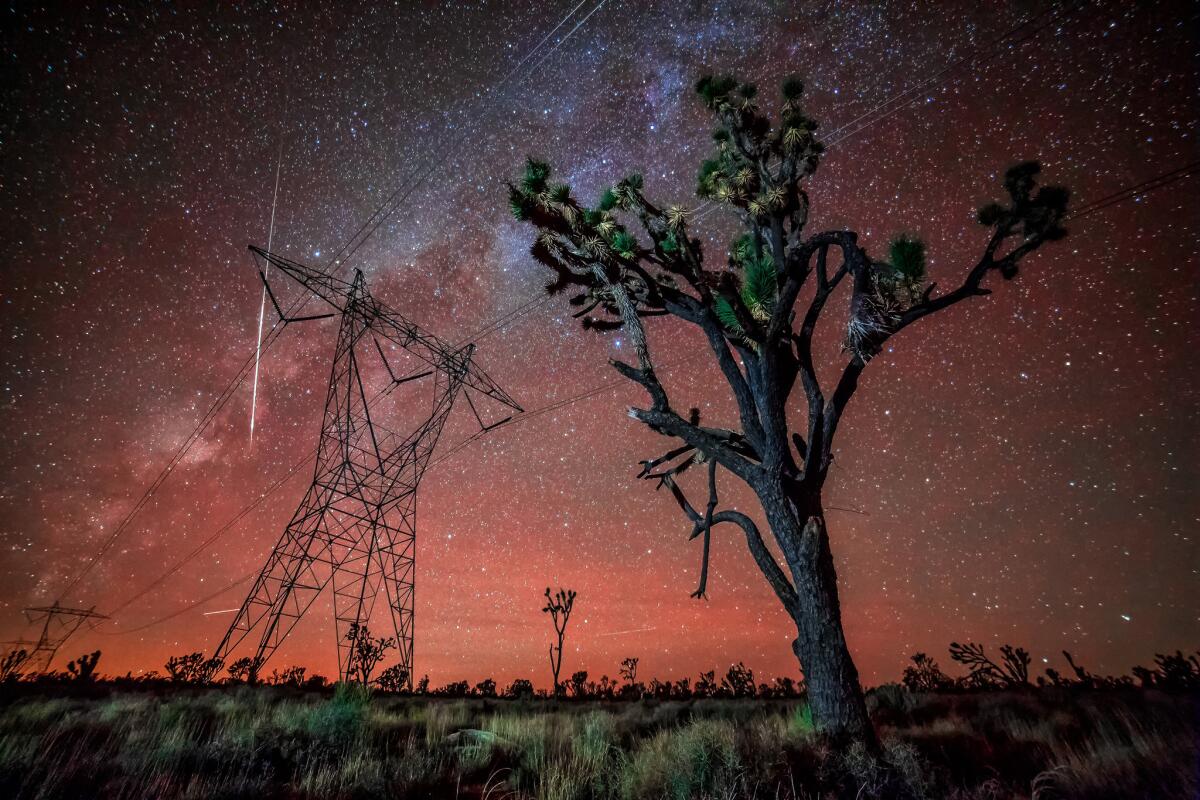
Clear skies — Owens Valley Radio Observatory
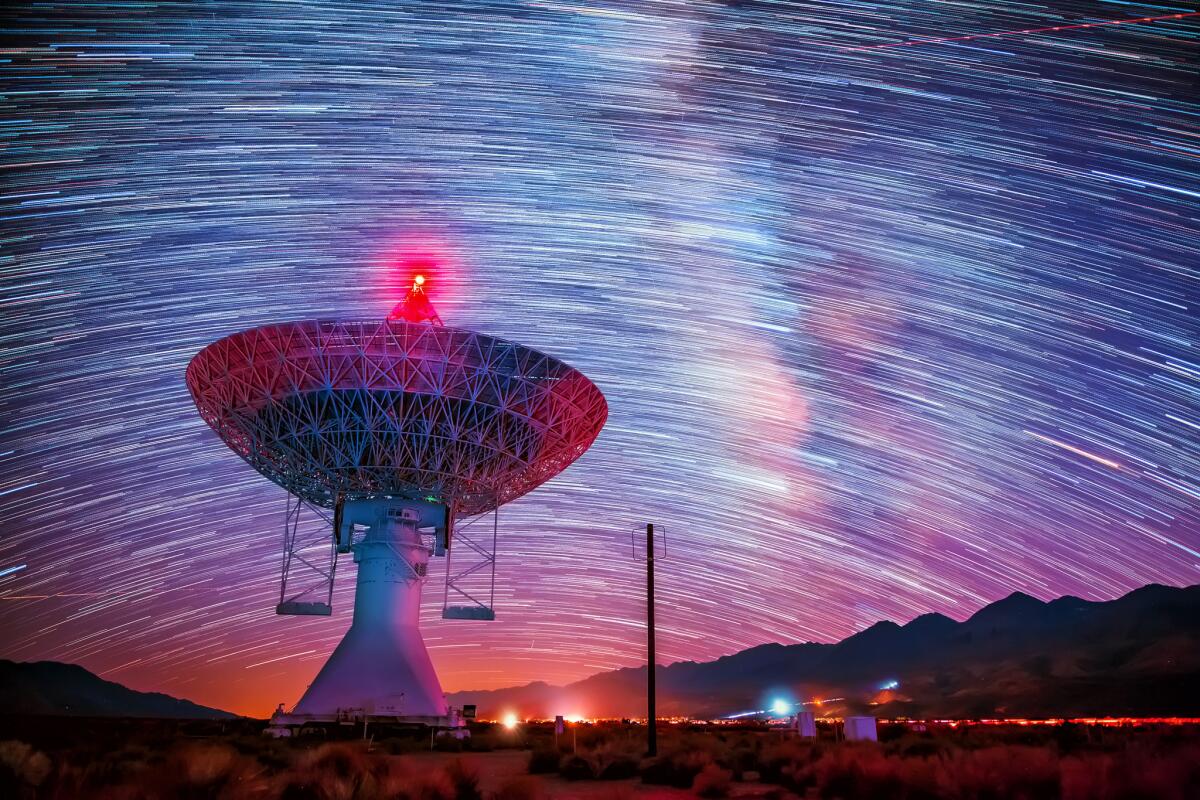
Gavin Heffernan and Harun Mehmedinovic are the co-creators of the Skyglow Project.
Follow the Opinion section on Twitter @latimesopinion or Facebook.
ALSO
Scientists get a rare view of a type Ia supernova magnified 50 times
How to, where to photograph a starry night sky
Away from the city lights of the West, the night sky promises a dazzling celestial show
A cure for the common opinion
Get thought-provoking perspectives with our weekly newsletter.
You may occasionally receive promotional content from the Los Angeles Times.







